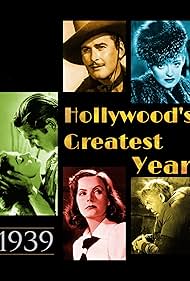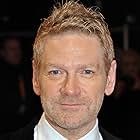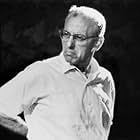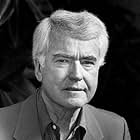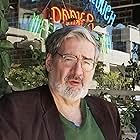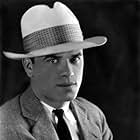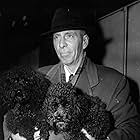A look at the movies in the year 1939, considered by many to be one of the greatest years in film history.A look at the movies in the year 1939, considered by many to be one of the greatest years in film history.A look at the movies in the year 1939, considered by many to be one of the greatest years in film history.
Photos
Kenneth Branagh
- Narrator
- (voice)
Thomas G. Schatz
- Self - Author, 'The Genius of the System'
- (as Thomas Schatz)
George Cukor
- Self
- (archive footage)
Francis Lederer
- Self
- (archive footage)
Frank Capra
- Self
- (archive footage)
Howard Hawks
- Self
- (archive footage)
Richard B. Jewell
- Self - Author of 'The RKO Story'
- (as Dr. Richard Jewell)
Douglas Fairbanks Jr.
- Self
- (archive footage)
Maureen O'Hara
- Self
- (archive footage)
- Director
- Writers
- All cast & crew
- Production, box office & more at IMDbPro
Storyline
Did you know
- TriviaAvailable on the Gone with the Wind (1939) Ultimate Collector's Edition and Scarlet Edition Blu-Ray releases, as well as the Ultimate Collector's Edition DVD.
- ConnectionsFeatures Jesse James (1939)
Featured review
Narrated by KENNETH BRANAGH, I'd give this one even higher points if the narration included even more key points when discussing actors like Errol Flynn. Scant mention is made of his famous co-star Olivia de Havilland and certainly the fact that they became a great screen team after their first film in 1935 (CAPTAIN BLOOD). Instead we get a brief glimpse of Olivia (a covered wagon close-up from DODGE CITY) and one brief scene arguing with Flynn. Anyone would think their screen team magic in eight films wasn't worth a mention. Indeed, all of his best films were with Olivia at his side.
I could mention a few other omissions, but you get the drift. As always in these sort of tributes to studios and stars, there are some that really needed to be pointed out. Spending so much time on STAGECOACH when honoring John Ford westerns without a single scene from his other '39 masterpiece, DRUMS ALONG THE MOHAWK, is an oversight hard to forgive--especially since the narration mentions the stunning new use in '39 of a little thing called Technicolor.
The films and stars that get the most attention are NINOTCHKA (because of Garbo), the Bette Davis era at Warner Brothers, the Cagney/Raft gangster films, and the most unusual Warner melodrama that dealt with the Nazis--CONFESSIONS OF A NAZI SPY.
At Paramount, we get brief mention of Cecil B. DeMille and Claudette Colbert.
At Fox, it's Darryl F. Zanuck and director John Ford's talent for making westerns but still no mention of DRUMS ALONG THE MOHAWK. Instead, it's the Tyrone Power film JESSE JAMES that's called the most popular western of the year and given the full Technicolor treatment.
Then a brief look at United Artists which was formed back in the '30s by icons like Chaplin, Fairbanks and Pickford--and how independent producers like Walter Wanger and Hal Roach found a niche and made some great films. A clip from OF MICE AND MEN shows a tense scene between Lon Chaney, Jr. and Betty Field.
At RKO, it's GUNGA DIN directed by George Stevens that cost the most to make and proved highly successful at the box-office. The other biggie is THE HUNCHBACK OF NOTRE DAME and Maureen O'Hara tells how awestruck she was by the masterful sets recreated entirely on a sound stage. The narration mentions that both of these films had underlying significance for audiences at that time--freedom from oppression being the theme in a world on the brink of war.
A brief clip of Fred and Ginger from THE STORY OF VERNON AND IRENE CASTLE, and a love scene from LOVE AFFAIR are shown for the conclusion of the RKO segment.
Then it's on to Selznick's independent feature GONE WITH THE WIND and all the obstacles in the producer's path before the film was finally made and declared an outstanding success.
As noted before, it's the omissions that will grate on some people--but all in all a good treatment of Hollywood's most incredibly creative year under the studio system.
I could mention a few other omissions, but you get the drift. As always in these sort of tributes to studios and stars, there are some that really needed to be pointed out. Spending so much time on STAGECOACH when honoring John Ford westerns without a single scene from his other '39 masterpiece, DRUMS ALONG THE MOHAWK, is an oversight hard to forgive--especially since the narration mentions the stunning new use in '39 of a little thing called Technicolor.
The films and stars that get the most attention are NINOTCHKA (because of Garbo), the Bette Davis era at Warner Brothers, the Cagney/Raft gangster films, and the most unusual Warner melodrama that dealt with the Nazis--CONFESSIONS OF A NAZI SPY.
At Paramount, we get brief mention of Cecil B. DeMille and Claudette Colbert.
At Fox, it's Darryl F. Zanuck and director John Ford's talent for making westerns but still no mention of DRUMS ALONG THE MOHAWK. Instead, it's the Tyrone Power film JESSE JAMES that's called the most popular western of the year and given the full Technicolor treatment.
Then a brief look at United Artists which was formed back in the '30s by icons like Chaplin, Fairbanks and Pickford--and how independent producers like Walter Wanger and Hal Roach found a niche and made some great films. A clip from OF MICE AND MEN shows a tense scene between Lon Chaney, Jr. and Betty Field.
At RKO, it's GUNGA DIN directed by George Stevens that cost the most to make and proved highly successful at the box-office. The other biggie is THE HUNCHBACK OF NOTRE DAME and Maureen O'Hara tells how awestruck she was by the masterful sets recreated entirely on a sound stage. The narration mentions that both of these films had underlying significance for audiences at that time--freedom from oppression being the theme in a world on the brink of war.
A brief clip of Fred and Ginger from THE STORY OF VERNON AND IRENE CASTLE, and a love scene from LOVE AFFAIR are shown for the conclusion of the RKO segment.
Then it's on to Selznick's independent feature GONE WITH THE WIND and all the obstacles in the producer's path before the film was finally made and declared an outstanding success.
As noted before, it's the omissions that will grate on some people--but all in all a good treatment of Hollywood's most incredibly creative year under the studio system.
Details
- Release date
- Country of origin
- Language
- Also known as
- 1939: El gran año de Hollywood
- Filming locations
- Hollywood, Los Angeles, California, USA(archive footage, all main filming Studios)
- Production company
- See more company credits at IMDbPro
- Runtime1 hour 9 minutes
- Color
- Aspect ratio
- 1.33 : 1
Contribute to this page
Suggest an edit or add missing content
